

Table of Contents
Yes, shipping goods from China may be very lucrative, but it may at the same time present daunting challenges and hiccups along the way, especially when you are starting out. The motive behind this comprehensive guide, therefore, is to equip you with the step-by-step blueprint on how to ship products from China profitably, especially if you’re starting out in the business.
We engage in the selection of the best freight forwarder by understanding some of the finer points of customs procedures and document requirements, to complying with strict packaging and labeling regulations, finding out about different transportation options, keeping shipping costs in check, and choosing the right method of delivery-all aspects crucial to a shipment cycle.
Join us on this journey as we take away the mystery of international shipping and provide key insights and practical advice to equip you with the knowledge to move into this fast-moving world of global trade.
Whether it is e-commerce, retail distribution, or wholesale trade, this guide should be your trusted companion in clarity, direction, and confidence in the journey ahead of shipping goods from the bustling markets of China to destinations around the world.

Beginner’s Guide to Shipping from China
Being a fresh player in the field of shipping goods from China, it is vital to understand how the whole process works. The following section will take you with minute details through each step that is involved in shipping goods:
Doing In-depth Research on Suppliers in China:
It is very important that you acquire the right suppliers in China before starting your shipping journey. You are supposed to do some serious research in finding out the potential suppliers based on their various reputation factors, quality of the product, price, and response of the customer. Check their authenticity by visiting the trade shows and by asking for samples to ensure that they will be relevant for your business.
How to Choose the Right Freight Forwarder:
How to Choose a Reliable Partner: A freight forwarder is the important connecting link between you and the shipping carriers.
In order to choose a freight forwarder, one should keep the following points in mind:
Experience and Expertise in Handling Shipments from China: Select freight forwarders that have experience in handling shipments originating from China.
Their expertise will smooth the process of shipment.
Network Coverage:
Ensure the freight forwarder has strong networks in your intended markets. With a strong network, shipment and delivery will be easier and smooth.
Service Range:
Distinguish between options available for air freight from that of sea freight. While through air freight, delivery is faster at higher costs, sea freight would be much cheaper for heavy shipments even though it takes longer. Choose a type that best suits the needs of your business.
Previous Customers’ Reviews and Testimonials:
Check for reviews and testimonials online from other businesses to get an idea about how reliable a freight forwarder is and what kind of service they provide.
Incoterms Understanding:
Choosing the Right Trade Terms: Incoterms stipulate the responsibility of both the buyer and seller under a contract of sale in an international trade transaction. Learn about some of the more common Incoterms like EXW-Ex Works, FOB-Free on Board, CIF-Cost, Insurance, and Freight. Choose those that will work best for your particular needs and the level of control you would like to assume for the transport of your products.
Price and Contract Negotiation with Suppliers:
This means that negotiating the price and contract with your suppliers will play a very important role in establishing terms and conditions favorable to both parties. Negotiate the best price you can, but also taking into consideration other aspects such as the quality of the product or service, lead times, and payment terms. Put all aspects of the agreement in writing through some sort of contract to avoid any possible misunderstandings or disputes.

Choosing the Right Freight Forwarder
The selection of the right freight forwarder is one of those important decisions that can play a decisive role in the success of your shipping undertakings. The following are some key factors to consider when choosing the appropriate freight forwarder:
Experience and Expertise:
Look for a freight forwarder experienced and skillful in handling shipments from China. An experienced freight forwarder would precisely comprehend the intricacies of international shipping regulations, customs clearance procedures, and difficult logistics, hence shipping will be much easier and smoother.
Industry Reputation and References:
Research their reputation through reviews or testimonials provided by other companies. Also, request references from the freight forwarder and contact their clients to inquire about the extent of their experience. A freight forwarder that maintains a good reputation and positive feedback from its clients is likely to provide reliable and quality service.
Global Network and Coverage:
Ensure the freight forwarder maintains a broad network and coverage in both China and your destination markets. With an expansive global network, a freight forwarder will have established relationships with shipping carriers, customs brokers, and other partners necessary to allow them to offer efficient and cost-effective shipping solutions.
Services Offered:
Also, consider a range of services each forwarder is offering to make sure they will suit your shipping needs. A number of freight forwarders might specialize either in specific industries or transportation modes; hence, one must choose an agency that can handle his or her demands appropriately. Regularly, freight forwarders handle customs clearance, cargo insurance, warehousing, and distribution.
Technology and Communication:
The review of the technology infrastructure and communication channels would imply that a forwarder who has state-of-the-art tracking systems and online platforms can render real-time visibility into your shipments, whereby you will be able to track the movement and status of your shipment right in real time. In other words, communication channels will ensure that at any given time, you can reach out for help or information with the freight forwarder.

Financial Stability and Compliance:
Check if the freight forwarder is financially sound and its compliance record is good to ensure one of their financial security and how they abide by set regulations within the industry. Operating with a forwarder who is financially stable and compliant minimizes disruptions or delays on the shipments.
Customer Service and Support:
Finally, there is customer service and support. Find a forwarder that responds to your queries and works towards the resolution of issues that may arise in the course of the shipment process.
These factors will enable you to carefully choose a freight forwarder that best suits your needs and offers smooth facilitation of shipments from China.
Experience in Shipping from China
Once a freight forwarder is to be searched, experience and expertise in the handling of shipments originating from China are some of the vital factors a shipper will have to consider. Here is why:
Knowledge of Chinese Regulations:
The forwarders who have experience in shipping from China are conversant with the regulations and customs procedures of China. They understand what documents should accompany what shipment, any import or export restrictions, and any other compliance issues that must be met so your shipments indeed meet all regulations.
Relationship with Local Partners:
Established freight forwarders have gained relationships with local partners in China, whether shipping carriers, customs brokers, or warehousing facilities. Such relationships will iron out operational wrinkles and help navigate the complex Chinese landscape of logistics more smoothly, easily, and with less risk of delay or complication.
Cultural and Language Proficiency:
An understanding of Chinese culture and language is usually a plus in shipping from China. Experienced freight forwarders will always have a staff member fluent either in Mandarin or Cantonese, well-versed in Chinese business practices; therefore, communication and negotiation will be easier and smoother with both local suppliers and local authorities.
Problem-Solving Skills:
Shipping from China may pose some particular challenges, including port congestions, changes in regulations, or unforeseen delays. Seasoned freight forwarders, through numerous years of shipment from China, have learned problem-solving skills by predicting such problems and applying effective solutions to keep your shipments on schedule.
Knowledge of Transportation Options:
It is a big country with highly variable transportation structures comprising ports, airports, railways, and roadways.
Experienced freight forwarders may further advise on the most efficient and cheapest options in transportation, considering your needs and the nature of your cargo.
Success Record:
Find freight forwarders with proven success records dealing with shipments from China.
Testimonials of clients, case studies, and references can provide insight into the performance that can be expected from the freight forwarder in the past and its ability to meet or exceed client expectations.
Thus, it is general experience and expertise in shipment handling from China that might be a big plus in the picking out of a freight forwarder.
By partnering with a knowledgeable and experienced provider, you could lessen risks, smoothen your shipping process, and ensure timely and efficient delivery of goods from China to their final destination.
Network coverage: Ensuring they have connections in your target markets
Freight forwarder selection for shipment of goods from China needs to be done with much caution, and it has to be selected in such a way that there is strong network coverage, especially in target markets. This document will explain why it is necessary and how one can evaluate the network of a freight forwarder.

Efficient Transportation and Delivery:
A freight forwarder with connections in your target markets can smoothen the transportation and delivery of your goods. Over time, people they would have developed a relationship with would include local carriers, customs brokers, and other logistics partners to coordinate everything from one stage in shipping to the next without hitches.
Reduced Transit Times:
A good network in the target markets can help you reduce the transit times of your shipments. With a freight forwarder who has local connections, you will be able to make use of the fastest transportation routes and expedited customs clearance procedures to allow for effective last-mile delivery services for your merchandise on time.
Cost Savings:
A freight forwarder with a wide network will have better leverage in negotiating rates with local carriers and service providers at your target markets. This can help you save costs on your shipping operations, which assists in optimizing your supply chain and, consequently, the bottom line.
Knowledge of Local Regulations and Practices:
Freight forwarders with connections in your target markets will have intimate knowledge of local regulations, customs procedures, and business practices that will no doubt be invaluable in smoothing out many complexities associated with international trade and compliance with applicable statutes and regulations.
To assess a freight forwarder’s network coverage, consider the following:
- Geographic reach: How broad is the geographic reach of the freight forwarder? Are they present in your target markets? Do they have offices or agents in key locations? Can they service remote or less-than-commonly served areas?
- Partnership and Alliances: Enquire about alliances that the freight forwarder has established with local carriers, customs brokers, and other logistics providers in target markets. Are they deeply connected with reputable companies that can help you realize your needs regarding shipments?
- Track Record: Check for any past experience by the freight forwarder in target markets. Have they moved cargo ‘in and out’ of these places in the past? Do they have references or case studies showing experience and expertise in your desired regions?
By this, you will be assured that your selected freight forwarder has connections in your target markets-developing efficiency, reliability, and cost-effectiveness in your shipping operations from China.
Services offered: Air freight vs sea freight options explained
When selecting a freight forwarder for shipping goods from China, it’s essential to understand the differences between air freight and sea freight options. Here’s an explanation of each:

Air Freight:
- Speed:Air freight is faster compared to any other means of transport. Therefore, it is convenient for use in the transportation of shipments that have a stringent timeline. Goods can be transported, for instance, from China to any place in the world in a few days, while sea freight takes several weeks.
- Reliability: Air freight services operate on fixed schedules. This makes air freight a preferred option for urgent or time-critical shipments because it is more predictable and reliable than sea freight.
- Cost: By nature, air freights are costlier compared to sea freight. The charges usually depend on the weight and volume of shipment, including the distance of travel. Hence, they are rather less economical for big or heavy shipments.
- Cargo Limitations: Air freight can carry only up to a certain size and weight of cargo. For cargo more than these limitations, there will be extra costs or may need special handling arrangements altogether.

Sea Freight:
- Cost-Effectiveness: Sea freight is typically more cost-effective than air freight, especially for large or heavy shipments. The cost of sea freight is calculated based on container size (20-foot or 40-foot containers), rather than weight or volume, making it a more economical choice for bulk cargo.
- Capacity: Sea freight offers greater capacity for transporting large volumes of goods. Shipping containers can accommodate a wide range of cargo types, sizes, and weights, making sea freight suitable for both full container loads (FCL) and less than container loads (LCL).
- Environmental Impact: Sea freight has a lower carbon footprint compared to air freight, making it a more environmentally friendly option for businesses seeking to reduce their carbon emissions.
- Transit Time: Sea freight is slower than air freight, with transit times ranging from several days to several weeks, depending on the destination and shipping route. While sea freight may not be suitable for time-sensitive shipments, it offers a reliable and cost-effective solution for shipments with longer lead times.

When choosing between air freight and sea freight options, consider factors such as the urgency of your shipment, budget constraints, cargo size and weight, and environmental considerations. A reputable freight forwarder can provide guidance and assistance in selecting the most suitable transportation mode based on your specific needs and requirements.
List of documents required for the importation/export of goods
Importation and exportation of goods entails a great number of documents that will prove compliance with Customs, ensure that shipping is smooth, and reduce risks. Some of the common documents during the importing and exporting of goods are listed below:
Commercial Invoice:
This is a detailed document supplied to the buyer or importer from the seller/ exporter, detailing the merchandise sold, its value, and other information to facilitate the customs-clearing and payment processes.
Packing List:
A document that outlines all the contents in every package or container, along with the descriptions of items, quantities, weights, and dimensions.
Bill of Lading (B/L):
A contract between the shipper, usually the exporter, and the carrier, confirming the goods are received for shipment and indicating agreement with those specified terms of transportation.
Customs Entry Documents:
The various forms and declarations that the customs authorities require to clear imported merchandise through customs, such as import declarations, import licenses, and other regulatory documents.
Certificate of Origin:
A document providing evidence of the country of origin of the goods, often required for customs clearance and also to qualify for preferential trade agreements or tariff benefits.
Import License or Permit:
Some countries require importers to apply for particular licenses or permits when importing specific kinds of goods, especially those that are restricted or regulated, like firearms, pharmaceuticals, or even agricultural produce.
Insurance Certificate:
Proof of insurance to cover the shipment against loss, damage, or theft in transit.
Quality Inspection Certificates: Variety of certificates issued by accredited inspection agencies are considered proof that imported goods have been inspected against certain standards and regulations on quality, safety, or other aspects.
Exporting Goods
- Commercial Invoice: An exporter also issues a commercial invoice to the buyer just like an import invoice providing information on the goods sold, its value and other details.
- Packing List: A document that describes the items included in every shipment regarding items, quantity, weight, and package detail.
Export Declaration:
A declaration in writing, in a formal way, addressed to customs authorities, describing goods actually exported, their values, destinations, and other related information, pertaining to regulatory and statistical purposes.
Certificate of Origin:
In addition to the import requirements, exporters often have to issue a certificate of origin to determine the country of origin of the goods for customs clearance and trade compliance purposes.
Export License or Permit:
Some countries want the exporter to obtain certain licenses or permits in case of specific types of goods, especially such goods that come under restriction or are controlled items regarding export regulations.
Export Control Documents:
Exporters have to furnish export control documents for those goods which, according to export controls or sanctions, are controlled, like dual-use items, military equipment, or sensitive technology.
Insurance Certificate:
Since import requirements are somewhat analogous, exporters may likewise be compelled to provide proof of insurance coverage against loss or damage in transit for the merchandise exported.
Though at this point, it would be relevant to mention that documentation may vary in respect of the nature of the goods to be transacted, countries involved, and the prevailing regulations.
Importers and exporters must consult customs authorities, freight forwarders, or legal advisers concerning compliance with all the necessary documents or regulatory requirements for shipments.
Clearing customs in China step by step
Clearing customs in China can be a very complicated process; knowing the steps to be taken can ease it. Here is a step-by-step guide on how one should clear customs in China.
Prepare Required Documentation:
Have the customs documentation ready well in advance of your goods’ arrival in China. Usually, you’ll need to prepare a commercial invoice, a packing list, a bill of lading, an air waybill for air shipments, a certificate of origin, and other documents relevant to your shipment.
Appoint a Customs Broker:
Working with a reputable customs broker in China will definitely be of great help in facilitating the customs clearance process. A customs broker will be of help in preparing and submitting the required documentation to you, guiding you through the customs regulations, and assisting in observing the import/export laws.
Declaration of Customs:
Once your products arrive in China, your customs broker will lodge a declaration to the appropriate customs authority. It would contain information like importer/exporter details, description of the goods, quantity, value of goods, and other information that may be necessary for customs clearance.
Pay Duties and Taxes:
Depending on what you are shipping and its value, you might be liable to pay customs duty, VAT, and any other tax or fee which may apply. Your customs broker will be in a position to advise you on the duties and taxes payable and handle the processing for payment to customs authorities.
Inspection and Clearance:
Customs can inspect your cargo to ensure your goods comply with regulations, duties, and taxes for safety. Once your goods have been found to conform to what is required and cleared of every other test, they will be released for entry into China.
Release of Goods:
With customs clearance, merchandise is released from customs custody to a final destination in China. Your customs broker will arrange transportation and delivery at a destination that has been pre-specified.
Recordkeeping and Compliance:
Record and keep all customs-related documentation and transactions accurately. Copies of the invoices, declarations, receipts, and other documents should be kept for their serving purpose, when audits or inquiries arise from the customs authorities.
Tracking and Monitoring of Shipments:
Keep updated with your shipment progress through tracking updates and call your customs broker/logistics service provider from time to time to know the customs clearance progress of your shipments.
Address any problems or delays immediately, for timely clearance and delivery of the goods.
All these steps, along with full cooperation with a good customs broker or logistics partner, will enable you to get through the customs clearance process in China efficiently and effectively, have all regulations complied with, and deliver your goods to their destination on time.
Common issues faced during customs clearance & solutions
Following are some of the common problems, along with their solutions, which may delay customs clearance and raises costs:
- Incompleted Documentation: Missing paperwork could really tie things up in clearance. Solution: In advance of shipment, pre-complete all documents such as invoices and packing lists.
- Tariff Misclassification: Misclassification will lead to a penalty. Solution: Use a customs broker to classify your merchandise accurately by applying the proper Harmonized System number (HS) classification.
- Valuation Disputes: The customs authorities can dispute or question the declared value. Solution: Make clear documentation of transaction values through proper invoicing and payment records.
- Non-Compliance with Regulations: There are fines attached for non-compliance. Solution: Take time to understand the detailed importing/ exporting requirements of the destination country.
- Delays from Inspections: It is inevitable that random checks within the process will delay the process. Solution: Be prepared for inspections with all your documents in order and good relations with customs officers.
A much smoother customs clearance and a minimum level of supply chain disruption can be more assured by business if they are being proactive in addressing these issues.
Packaging and Labeling Guidelines
Packaging and labeling play a crucial role in the shipping process, ensuring the safe and efficient transport of goods while also complying with regulatory requirements. Here are some packaging and labeling guidelines to follow when shipping goods from China:
Use Sturdy and Secure Packaging:
Choose packaging materials that are strong, durable, and capable of protecting your goods during transit. Use sturdy cardboard boxes, padded envelopes, or wooden crates as appropriate for the size, weight, and fragility of your items.
Properly Secure and Seal Packages:
Seal packages securely using strong adhesive tape or strapping to prevent them from opening or becoming damaged during handling. Use appropriate cushioning materials, such as bubble wrap, foam peanuts, or packing paper, to protect fragile items from shock and vibration.
Label Packages Clearly and Accurately:
Label each package with clear and legible shipping labels containing the recipient’s name, address, and contact information. Include any special handling instructions or shipping instructions to ensure proper delivery.
Include Packing Slips or Invoices:
Place a packing slip or invoice inside each package, detailing the contents of the shipment, quantities, and any other relevant information. This helps customs officials and shipping carriers accurately process and track your shipments.
Comply with Customs Labeling Requirements:
Ensure that your packages are labeled in accordance with customs regulations in both China and the destination country. Include all required information, such as country of origin, product descriptions, value, and harmonized system (HS) codes, to facilitate customs clearance.
Adhere to Product-Specific Labeling Requirements:
Some products may have specific labeling requirements imposed by regulatory authorities or industry standards. For example, food products may require nutritional information, expiration dates, or allergen warnings, while electronics may require safety certifications or voltage ratings.
Consider Environmental Impact:
Choose eco-friendly packaging materials whenever possible to minimize environmental impact. Opt for recyclable, biodegradable, or reusable packaging materials and avoid excessive packaging or non-recyclable plastics.
Test Packaging for Durability and Suitability:
Conduct thorough testing of your packaging materials to ensure they can withstand the rigors of transportation, including handling, stacking, and environmental conditions. Perform drop tests, compression tests, and vibration tests to verify the integrity of your packaging.
Follow Carrier-Specific Guidelines:
Different shipping carriers may have specific packaging and labeling requirements, so be sure to follow their guidelines for packaging and labeling your shipments. This helps ensure compliance and avoid additional fees or delays.
By following these packaging and labeling guidelines, you can help ensure the safe and efficient transport of your goods from China to their destination, while also complying with regulatory requirements and minimizing the risk of damage or loss during transit.
International packaging standards
International packaging standards are essential to ensure consistency, safety, and efficiency in the shipment of goods across borders. Several organizations and standards bodies have established guidelines and regulations for packaging to meet international requirements. Here are some of the key international packaging standards:

International Organization for Standardization (ISO):
- ISO 780: Packaging – Distribution packaging – Graphical symbols for handling and storage of packages
- ISO 9001: Quality management systems – Requirements
- ISO 14001: Environmental management systems – Requirements with guidance for use
- ISO 11607: Packaging for terminally sterilized medical devices
International Safe Transit Association (ISTA):
- ISTA Series 1: Non-Simulation Integrity Performance Tests
- ISTA Series 2: Partial Simulation Performance Tests
- ISTA Series 3: General Simulation Performance Tests
ASTM International (formerly known as the American Society for Testing and Materials):
- ASTM D3951: Standard Practice for Commercial Packaging
- ASTM D4169: Standard Practice for Performance Testing of Shipping Containers and Systems
- ASTM D4728: Standard Test Method for Random Vibration Testing of Shipping Containers
United Nations Recommendations on the Transport of Dangerous Goods (UNRTDG):
- UN Recommendations on the Transport of Dangerous Goods – Model Regulations
- UN Globally Harmonized System of Classification and Labelling of Chemicals (GHS)
Food and Agriculture Organization (FAO):
- FAO Manual on the Development and Use of FAO Specifications for Plant Protection Products
European Committee for Standardization (CEN):
- EN 868: Packaging for terminally sterilized medical devices
- EN 13427: Requirements for packaging recoverable through composting and biodegradation
United States Pharmacopeia (USP):
- USP Chapter <670>: Containers – Glass
These standards cover various aspects of packaging, including design, materials, testing methods, labeling, and environmental considerations. They aim to ensure the quality, safety, and suitability of packaging for different types of products, industries, and transportation modes.
It’s important for businesses involved in international trade to be familiar with relevant packaging standards and ensure compliance with applicable regulations to facilitate smooth and efficient shipping operations, minimize risks, and protect the integrity of their goods during transit.
Transporation Modes:
When shipping goods internationally from China, various transportation modes are available, each offering distinct advantages and considerations. Here are the primary transportation modes used for international shipping:

Sea Freight:
Advantages:
- Cost-effective for large shipments or bulk cargo.
- Suitable for non-time-sensitive goods.
- Ideal for shipments with longer lead times.
Considerations:
Longer transit times compared to air freight.- Limited flexibility in terms of delivery schedules.
- Potential for weather-related delays or disruptions.
Air Freight:
Advantages:
- Fastest mode of transportation, ideal for time-sensitive shipments.
- Offers greater security and reduced risk of damage or theft.
- Greater flexibility in terms of delivery schedules.
Considerations:
- Higher transportation costs compared to sea freight.
- Limited capacity for large or heavy shipments.
- Additional handling fees may apply.
Rail Freight:
Advantages:
- Faster transit times compared to sea freight, especially for shipments between Asia and Europe.
- Cost-effective for certain routes and cargo types.
- Reduced carbon emissions compared to air freight.
Considerations:
- Limited availability of rail networks for certain destinations.
- Dependence on infrastructure and logistics capabilities along the rail route.
- Potential for customs delays at border crossings.
Road Freight:
Advantages:
- Provides door-to-door delivery services for inland transportation.
- Flexibility in terms of routes and schedules.
- Cost-effective for short-distance shipments or within specific regions.
Considerations:
- Limited range for long-distance international shipments.
- Vulnerable to traffic congestion, road conditions, and weather-related disruptions.
- Customs clearance procedures may vary by country and border crossing.
Multimodal Transportation:
Advantages:
- Combines multiple transportation modes to optimize cost, speed, and efficiency.
- Offers flexibility and reliability in complex shipping routes.
- Provides end-to-end visibility and tracking of shipments.
Considerations:
- Requires coordination between different carriers and logistics providers.
- Potential for delays or complications at transfer points.
- Increased complexity in terms of documentation and logistics management.
When selecting a transportation mode for international shipping from China , consider factors such as the urgency of your shipment, budget constraints, cargo size and weight, destination, and specific requirements of your supply chain.
Collaborating with experienced freight forwarders or logistics providers can help you navigate the complexities of international transportation and optimize your shipping operations.
Delivery Methods
When shipping goods internationally from China, various delivery methods are available to transport shipments from the point of origin to their final destination. Here are some common delivery methods used in international shipping:
Door-to-Door Delivery:
- Description: In this method, the logistics provider manages the entire shipping process from pickup at the sender’s location in China to delivery at the recipient’s doorstep at the destination.
- Advantages: Convenient and hassle-free for both the sender and recipient. Provides end-to-end visibility and tracking of the shipment.
- Considerations: Generally more expensive compared to other delivery methods. May involve additional fees for customs clearance and last-mile delivery services.
Port-to-Port Delivery:
- Description: With port-to-port delivery, the shipment is transported from the port of origin in China to the port of destination overseas, where the recipient is responsible for arranging inland transportation to their final destination.
- Advantages: Cost-effective option for international shipping. Suitable for large shipments or bulk cargo.
- Considerations: Requires coordination for inland transportation at the destination port. Longer transit times compared to door-to-door delivery.
Airport-to-Airport Delivery:
- Description: In airport-to-airport delivery, the shipment is transported from the airport of departure in China to the airport of arrival overseas, where the recipient arranges for customs clearance and onward transportation.
- Advantages: Fast and efficient for time-sensitive shipments. Offers flexibility in terms of delivery schedules.
- Considerations: Limited to destinations with airport infrastructure. May involve additional handling and customs clearance procedures at the destination airport.
Railway Delivery:
- Description: Railway delivery involves transporting shipments by rail from China to destinations in Europe or neighboring countries along the Belt and Road Initiative routes.
- Advantages: Faster transit times compared to sea freight. Cost-effective for certain routes and cargo types.
- Considerations: Limited availability of rail networks for certain destinations. Requires coordination for last-mile delivery at the destination.
Multimodal Delivery:
- Description: Multimodal delivery combines multiple transportation modes, such as sea, air, rail, and road, to optimize cost, speed, and efficiency in shipping.
- Advantages: Provides flexibility and reliability in complex shipping routes. Offers end-to-end visibility and tracking of shipments.
- Considerations: Requires coordination between different carriers and logistics providers. Increased complexity in terms of documentation and logistics management.
When selecting a delivery method for international shipping from China, consider factors such as the urgency of your shipment, budget constraints, destination, and specific requirements of your supply chain. Working with experienced freight forwarders or logistics providers can help you choose the most suitable delivery method and optimize your shipping operations.

Shipping goods from China can be an overwhelming world for any newcomer, but once you are powered with the proper knowledge and instruction, it can be changed into a smooth journey.
This all-inclusive guide promises to equip you with information of value to all aspects related to shipping in such a way that you begin your venture with confidence.
From deep research among the genuine suppliers to understanding the nuances of Customs and Excise Regulations, from the choice of freight forwarders to judicious management of shipping costs-this guide covers every important aspect.
These good tips set a strong foundation for your journey as an importer into the dynamic world of international trade.
Remember, it is not the end but the beginning of this journey. Further success in international trade is actually a continuum in learning and adapting. Keep your finger on the pulse of what happens within your industry, be aware of regulation changes, and move with the times in relation to best practice.
Let every passing day bring improvement to your methods, hone your processes, and give your shipping a notch higher.
You will have persistence, resiliency, and an insatiable desire to learn to help navigate through the storm known as international trade. With these qualities, you shall emerge victorious in your quest for success as an importer.
The future may hold pitfalls but with determination and dedication, you shall conquer all.

TopShipping
With years of experience in logistics and freight forwarding, the author is passionate about making shipping smoother and more efficient.
As a leader at TopShipping, they’ve developed a deep understanding of supply chain management, international shipping rules, and creative logistics solutions. They’re driven by a desire to help businesses succeed by delivering reliable, customer-focused services.
Over the years, they’ve also shared their expertise by writing for various industry publications, offering practical tips and insights on the latest trends in logistics. Thanks to their leadership, TopShipping has become a trusted name for companies looking for hassle-free global freight solutions.
Comment Section
Comment
Write your idea about "A comprehensive guide to shipping from China"


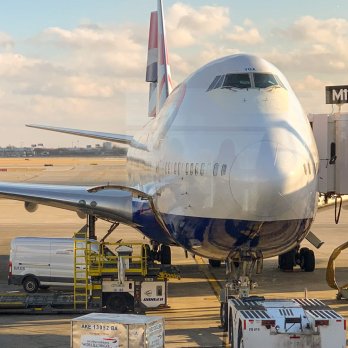

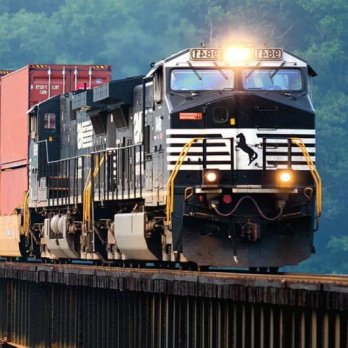
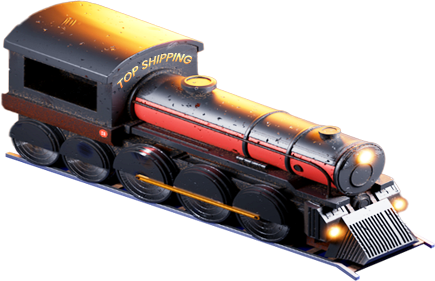
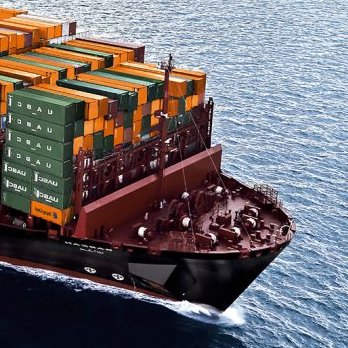
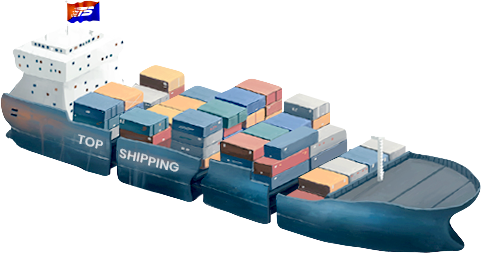
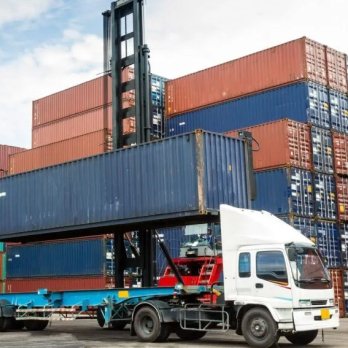
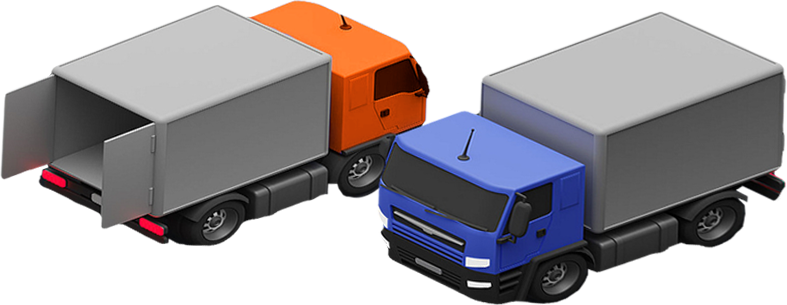
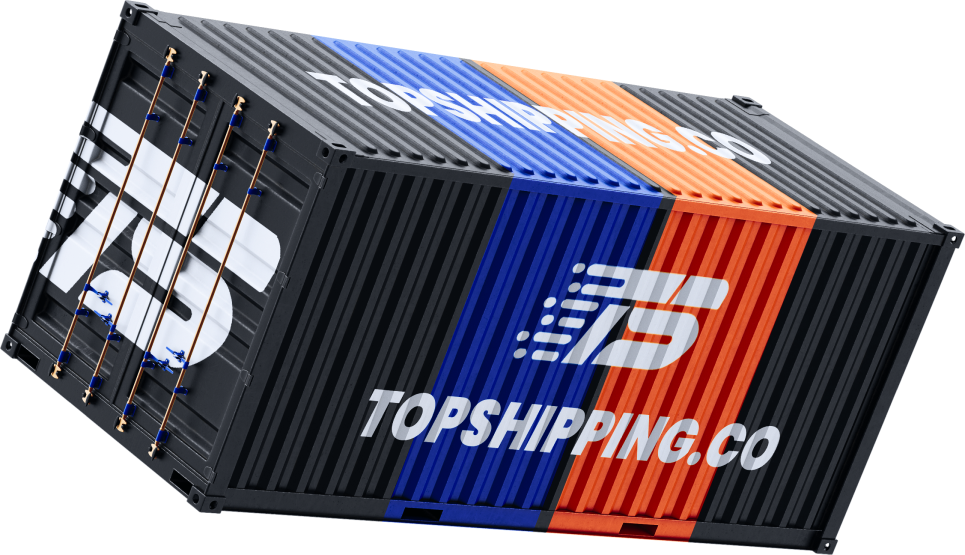



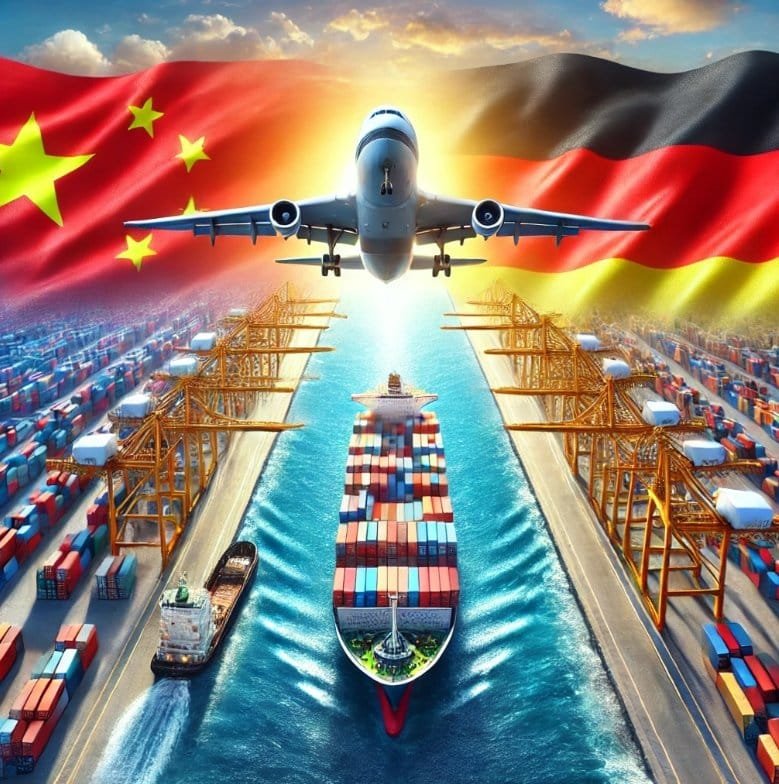

No comments yet.